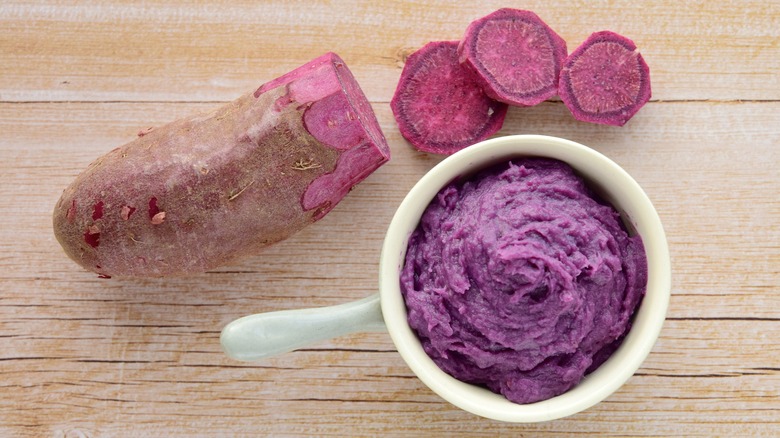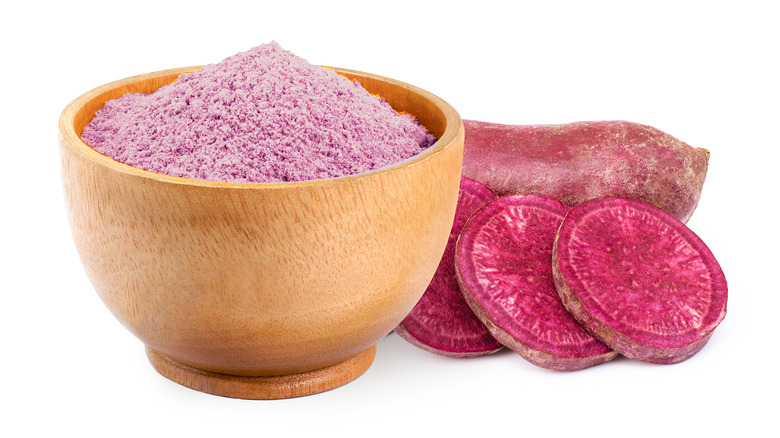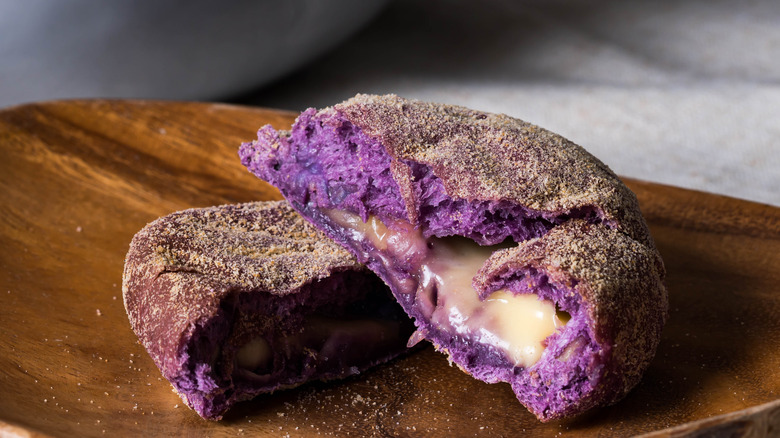The Natural Ingredient That Can Give Almost Any Dessert A Vibrant Pop
In a world of red velvet cupcakes, matcha brownies, and strawberry ice cream, desserts are certainly colorful. Now, you can add purple to the list of vibrant desserts. From ice cream and donuts to cupcakes and croissants, ube desserts have become increasingly popular in the United States.
Ube is a root vegetable, often also known as purple yam, that is native to Southeast Asia. The vegetable is especially prevalent in Filipino cuisine. In fact, ube is the term for the vegetable in Tagalog, a language largely spoken in the Philippines. This ingredient gives desserts a natural pop of a soft, beautiful purple color.
Ube has a nutty, vanilla flavor which lends itself well to desserts. It is widely used in traditional Filipino desserts, such as pandesal, halo-halo, ube halaya, and ube kalamay. The good news? Incorporating ube into your recipe couldn't be any easier; to give your next dessert a pop of color, try adding in a bit of ube powder.
How to use ube powder
Ube powder is a great introduction to the ingredient, if this is your first time cooking or baking with it. Ube powder is dried, dehydrated ube that — as the name suggests — was turned into powder. Add ube powder directly into your baking mix for a boost of flavor and color to your heart's content. There's no general rule on how much powder to add as it depends on the recipe and type of dessert, but feel free to add as much as you desire for taste and color.
In addition to simply adding ube powder to a baking mix, you can also rehydrate the powder. Rehydrating ube powder is ideal for using the purple yam as a creamy filling. To rehydrate your ube powder, add the powder and water to a pan over medium heat; You typically want to use one cup of water for every ¼ cup of ube powder. Stir the mixture until it becomes smooth and thick, with a paste-like consistency.
Ube powder is available at most Asian grocery stores as well as Walmart and Amazon. Some brands also sell their ube powder product online as well.
How to use fresh ube
Fresh and frozen ube can also be used for baking. While fresh purple yams can be hard to find, frozen yams can often be found at Filipino grocery stores or Asian supermarkets. Once you get your hands on the yams, you'll want to make sure to cook and grate the vegetables before using them. Boil ube thoroughly until it's soft and fully cooked. Then, the mashed ube can be folded into baking mixes.
Fresh ube is also loaded with nutrition. The purple yam is packed with vitamins A and C as well as potassium. It also boasts antioxidants that may help with lower blood pressure and promote gut health, according to Healthline.
If you're not sure how to bake with ube, it practically can go in anything. Since ube recently exploded in popularity in the U.S., the root vegetable has been used in nearly every dessert. Nowadays, it's hard to not see ube-filled croissants and ube-flavored donuts on social media feeds. It may only be time until ube cronuts become the next big thing.


